|
   |
|
Page 4 |
Newsletter 131 Winter 2020 © Hampshire Mills Group |
|
Mills on Field Visits
Keith Andrews
|
My
article in the last newsletter described how the
University of Southampton Adult Education Department
in conjunction with Southampton University
Industrial Archaeology Group (SUIAG) – as was, now
Hampshire Industrial Archaeology Society (HIAS) –
organised week and weekend field visits to all parts
of the country. As mentioned, there were generally
at most only one or two mills featured in the trips
depending on the area visited, with the notable
exception of the 1985 Essex and South Suffolk field
visit, described last time.
So here are a selection of the mills that Ruth or I
visited on other field visits over the years, with
our photos taken at the time, or in some cases on
other private visits. Again, the information about
each mill is taken as is from the notes for the
visit prepared by the leader Dr Edwin Course, so
remember that they relate to the situation at the
date of the visit! A further selection is planned
for the next newsletter.
Museum of East Anglian Rural Life, Stowmarket (TM
047584) – August 1981
|
|
[From the Museum Guidebook]
The
Alton Mill group of buildings formerly stood at
Sutton near Ipswich. The mill is a white
timber-framed and weather-boarded building dating
from the 17th century. It was enlarged during the
18th century so the waterwheel is now inside the
building. |
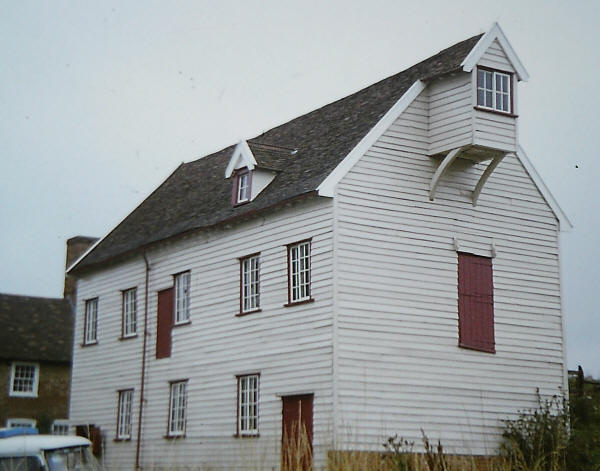 |
|
The Eastbridge Windpump
was one of four windpumps draining the Minsmere
Level near Leiston in Suffolk. It was bult in the
mid-19th century probably by millwright Robert
Martin of Beccles and worked until 1939. Falling
into disrepair during the war it was replaced after
1945 with a modern type of iron windpump. The pump
is of the smock type, with a timber-framed tower of
pitch pine 30ft high clad in weather-boarding. The
four patent sails have a span of 44ft, and drive a
unique 3-cylinder lift pump, constructed of
zinc-lined timber with cast iron pistons and valves.
|
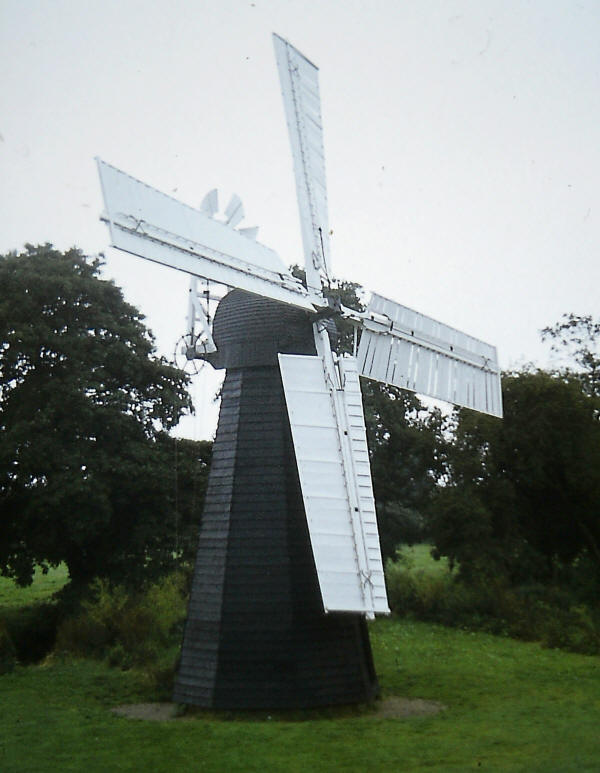 |
|
Thwaites Putty Mills, Leeds (SE 328312) – August
1984
The
red brick buildings of this complex site date from
the 1820s, when an oil seed crushing and corn
grinding mill was established on an old milling
site. These mills were re-equipped in the 1870s to
crush flint; later they ground chalk for use in
putty manufacture. Until recently a variety of
machinery was driven by two iron breastshot water
wheels, of late 18th century date. This unique
industrial monument also includes a machine shop,
stabling, a drying floor, and offices.
|
 |
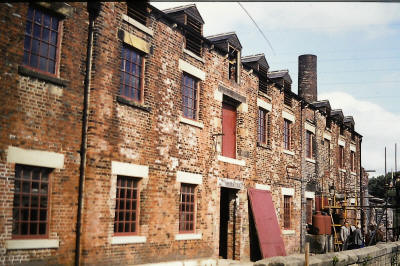 |
|
KA:
In 1990 the site opened as a museum which is now
run by Leeds City Council. The pictures right and
below are from a visit in 2000. One of the
waterwheels is just visible behind the equipment in
the lower pictures.
|
|
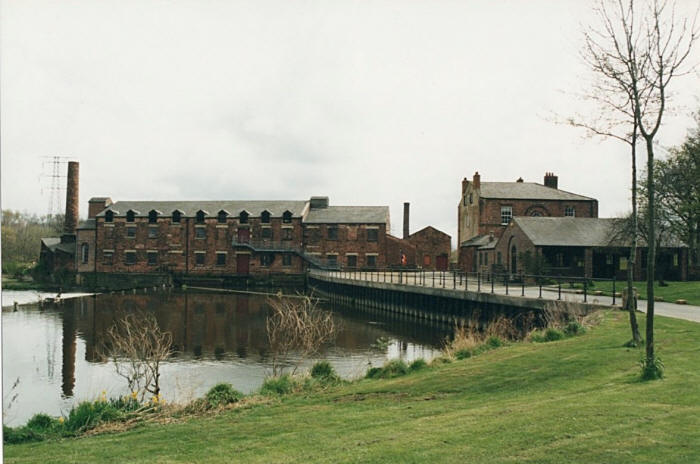
|
|
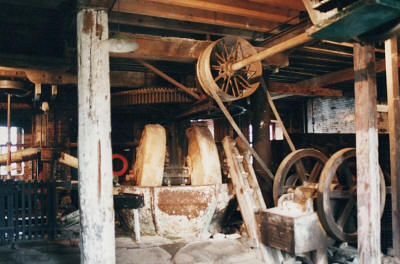
|
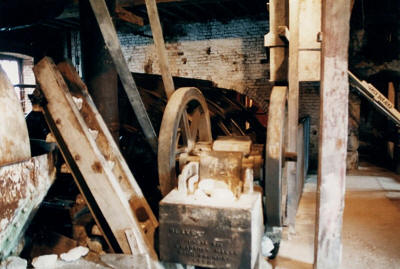 |
|
Cheddleton Flint Mill, near Leek (SJ 973527) –
August 1987
Features of interest at Cheddleton include the
Caldon Canal of 1777, a building used for brewing, a
former silk mill, and the main item of interest: a
flint grinding mill. It was constructed on a
traditional water power site. The mills are
preserved by a Trust.
The
lower pictures are from 1981.
|
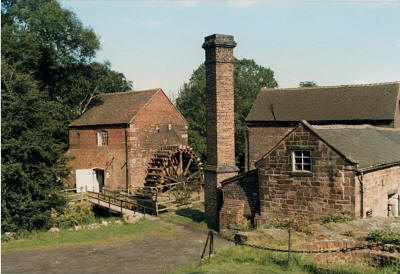 |
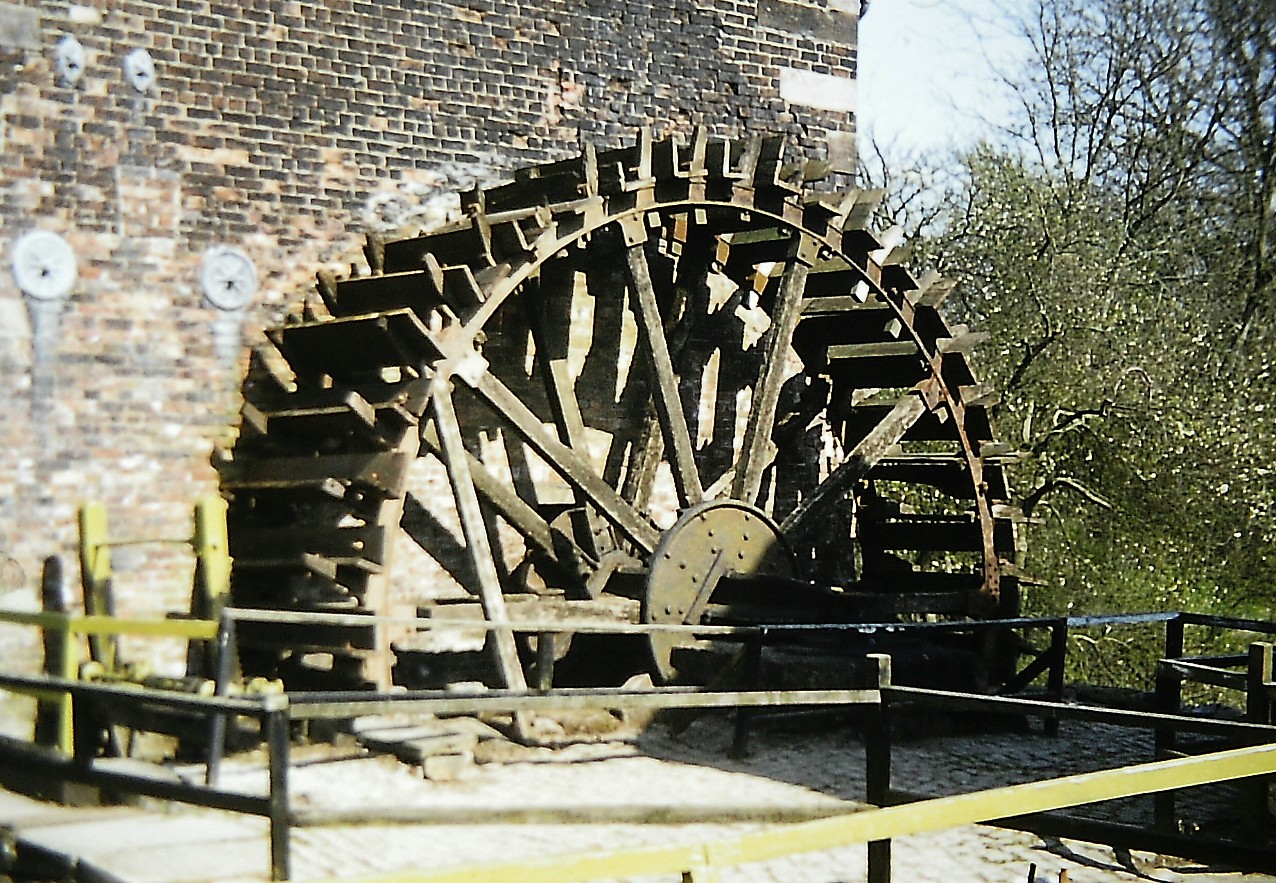 |
 |
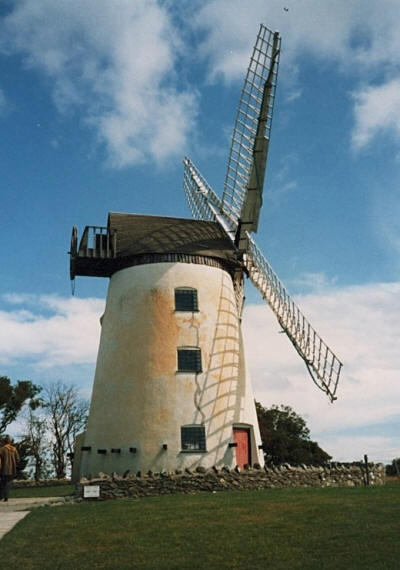 |
Melin Llynnon, Anglesey (SH 340852) – August 1988
Anglesey has the remains of many windmills, but at
present Melin Llynnon is the only one restored to
working order and producing flour. It is a tower
mill with common sails. It is open to the public.
KA:
HMG visited Melin Llynnon on the 2018 Study Trip;
see
newsletter 122 for more pictures.
Dunkirk Mill, Nailsworth (SO 845005) – May 1989
The
buildings have dates from 1798 to 1855. At one time
it had 5 waterwheels and a beam engine. Cloth
production ceased about 1890. The last industrial
use was for engineering and the mills are now in
residential use.
KA:
HMG visited Dunkirk Mill in 2010; see
newsletter 89.
|
|

|
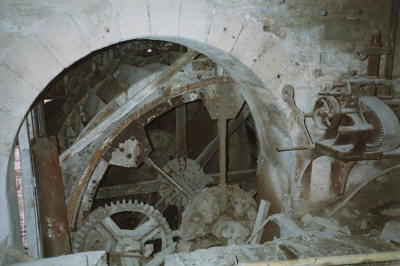
|
|
Maesllyn Mill, near Newcastle Emlyn (SN 368447) –
August 1989
Maesllyn Mill was established on a water power site,
with Pelton wheels, in 1881. In his book of 1968,
Geraint Jenkins noted that B R Morgan & Co employed
6 people in the mill. The machinery included a
carding set, a spinning mule, and 9 looms. The mill
survives as a working museum.
|
 |
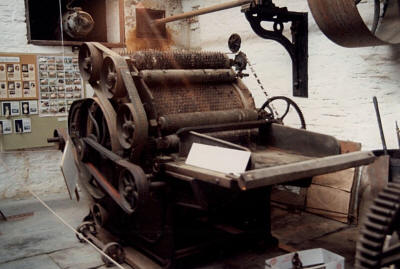
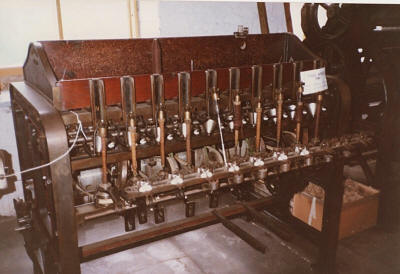 |
|
Y
Felin, St Dogmaels (SN 165459) – August 1989
This
water-powered corn mill has been restored by Michael
Hall, the present owner, and produces wholemeal and
speciality flours. The building dates from the late
18th or early 19th century, but new machinery was
installed in 1819. The overshot wheel was rebuilt
in 1981, incorporating a rim from a mill at St
Davids, and there are 3 pairs of stones.
KA:
HMG visited Y Felin on the 2017 Study Trip, when the
picture below on the left was taken; see
newsletter 118 for more pictures.
|
 |
 |
|
Carew Tide Mill, Pembrokeshire (SN 042038) –
August 1989
The
mill is a fine stone building on an impressive
causeway (pictured below left, in 1979) with its
machinery intact. Inevitably there will be
comparisons with Eling Tide Mill. Briefly , the
building is finer, but although the machinery was
restored to working order in 1973, no flour is
produced.
KA:
HMG visited Carew on the 2017 Study Trip; see
newsletter 118 for more pictures.
|
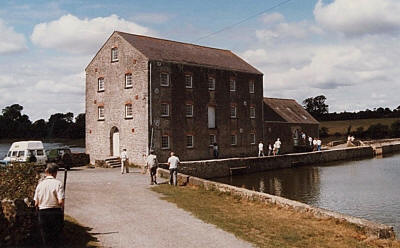 |
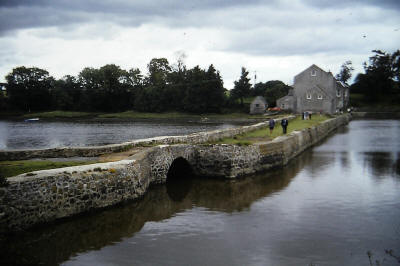 |
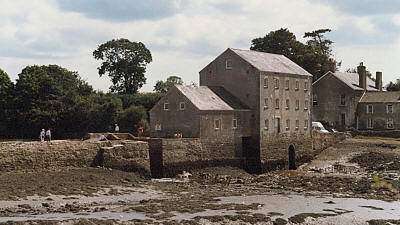 |
|
Gilkes, Kendal (SD 518926) – August 1990
In
Hampshire there is a tendency to regard Armfields as
the only manufacturers of water turbines, but in
fact, the turbines of Gilkes are also to be found in
many parts of the world. A predecessor of the
present company was Williamsons, who produced Pelton
wheels; Gilkes were established in 1881.
Inevitably, there has been some diversification of
product, but historically this was above all a
manufactory for water turbines. A former director
of Gilkes was a founder of the Newcomen Society.
KA:
No pictures available.
|
|
Little Salkeld Mill, Cumbria (SD 566360) –
August 1990

|
A
suggested date for the building is the 18th century,
but with considerable renovation in the mid to late
19th century. There were two overshot wheels of
which the upper, which drove oatmeal gear, was
removed in 1950. Wholemeal flour is now produced
with French burr stones. The wheel is by Henry of
Aberdeen and is dated 1914. |
|
Bourn Windmill, Cambridgeshire (TL 312580) –
September 1990
A
very early postmill, perhaps of 1636. There is no
roundhouse to enclose the lower part of the post and
quarterbars, which contributes to its ancient
appearance. The machinery is mainly of 19th century
date. It was gifted to Cambridge Preservation
Society in 1932, and they have maintained it ever
since.
|
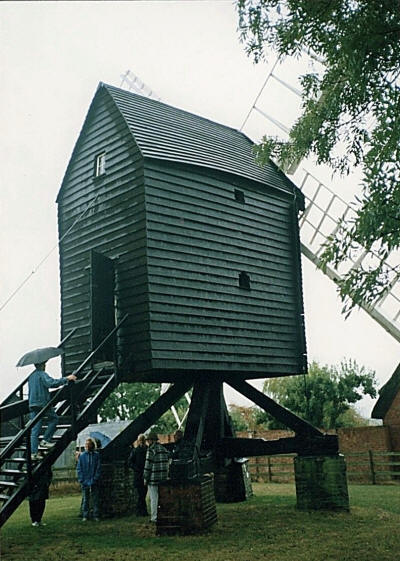 |
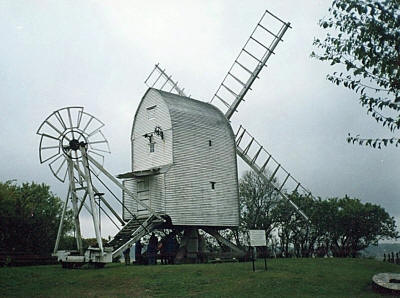 |
Great Chishill Windmill, near Royston (TL 413388) –
September 1990
Another postmill, this one rebuilt in 1819, with
patent sails and a fantail provided in 1890. Like
Bourn, it has no roundhouse. The sails lack
shutters, but the internal machinery is complete.
|
|
Crabble Watermill, Dover (TR 297432) – September
1991
A
typical Kent mill, now restored and producing
flour. The lower parts of the walls are of brick,
but above, is weather-boarding with a timber frame.
There is an external wheel in a wheelhouse.
KA: If
anyone has pictures of Felin Geri, Siwan Woollen
Mill, or Felin Newydd in South Wales, or Muncaster
Mill in Cumbria that I could use in the next
article, I would be grateful if you could send them
to me at
hpdn.ka@ntlworld.com .
|
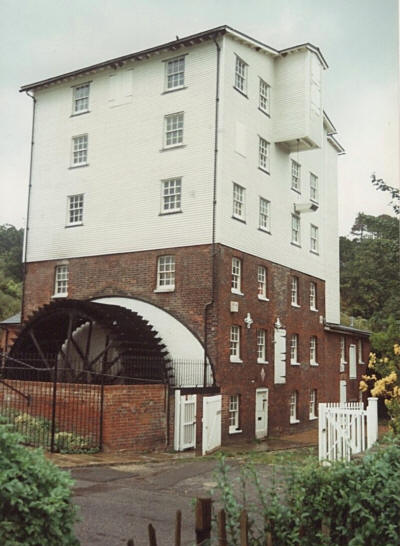 |
|
   |
|
|
